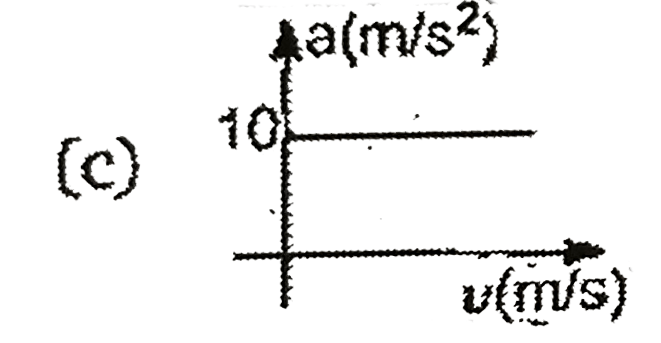Look at the graphs (a) to (d) carefully and state, with reasons, with of these cannot possibly represent one dimensional motion of a particle.

(a) The given x-t graph, shown in (a), does not represent one-dimensional motion of the particle. This is because a particle cannot have two positions at the same instant of time.
(b) The given v–t graph, shown in (b), does not represent one-dimensional motion of the particle. This is because a particle can never have two values of velocity at the same instant of time.
(c) The given v–t graph, shown in (c), does not represent one-dimensional motion of the particle. This is because speed being a scalar quantity cannot be negative.
(d) The given v–t graph, shown in (d), does not represent one-dimensional motion of the particle. This is because the total path length travelled by the particle cannot decrease with time.
Topper's Solved these Questions
Similar Questions
Look at the graphs (a) to (d) carefully and state, with reasons, which of these cannot possibly represent one-dimensional motion of a particle.

View SolutionLook at the graphs Fig. 2 (NCT) .5.(a) to (d) carefully and state, with reasons, with of these connot possinly represent on edimensional motion of a particle.

View Solution
Knowledge Check
Look at the graphs (a) to (d) carefully and indicate which of these possibly represents one dimensional motion of a particle ?
A B
B C
C D
D
Which of the following graphs cannot possibly represent one dimensional motion of a particle?
 A(i) and (ii)B(ii) and (iii)C(i), (ii) and (iii)DAll four
A(i) and (ii)B(ii) and (iii)C(i), (ii) and (iii)DAll fourWhich of the following graphs cannot represent one dimensional motion of a particle?
A B
B C
C D
D
Which of the following graphs cannot possibly represent one dimensional motion of a particle.
 .
.
View SolutionState with reasons why the graph in the adjacent figure cannot represent one-dimensional motion of a particle.

View SolutionExplain with reasons which of the following gaphs can possibly represent the motion of a particle observed in nature ?

View SolutionWhich of the velocity-time (v - 1) graphs shown in figure can possibly represent one-dimensional motion of a particle? (A) (B)
View SolutionWhich statements can be possible cases in one/two dimensional motion:
View Solution

